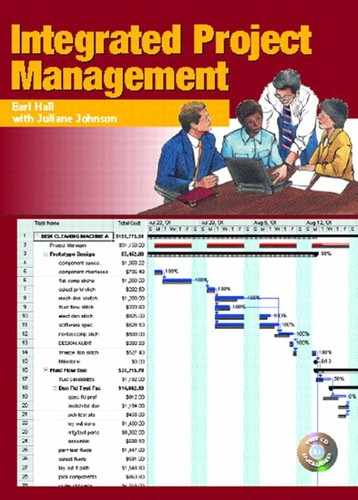Collaborative Leadership
Collaborative leadership is critical to Integrated Project Management (IPM). It is at the heart of every accomplishment involved in planning and executing the project. Collaborative leadership can be defined as the team working together to reach a mutual agreement whenever a decision is required. A project manager, acting as a trainer, will explain collaboration leadership, as presented here, at the kickoff meeting (see Chapter 4 for more details).
Team Norms
A procedure that builds team awareness and a “we are a team” attitude is the creation of team norms, or rules of engagement. The process of creating norms takes place at the start of the kickoff meeting, with the project manager directing a 15-minute activity in which team members choose norms to guide them as they interact with each other. This activity helps build a sense of teamwork, and the norms themselves help keep meetings running smoothly.
The procedure is simple. The project manager asks the team to think of a set of rules that will be useful in making meetings more efficient. It is good to recruit a team member to lead this activity because it enables the project manager to join the others and act as a team member and to suggest a few norms as starters. One norm that is basic to IPM procedure is team meetings will never exceed two hours.
Limiting meetings to two hours helps gain meeting participation from the “volunteers,” or team members with other pressing job responsibilities. Longer meetings could well discourage them from coming, but a two-hour meeting with a clear agenda will generally be doable for these busy people, particularly if they believe the project is important. The project manager is responsible for convincing them of the project's importance and for preparing the agenda, all of which is discussed later in Chapters 3 and 4.
Some other norm suggestions are:
We will attend all meetings and arrive on time. (The project manager will explain the importance of all team members attending all planning meetings. [See Chapter 3.])
We will stick closely to the agenda.
We will come prepared to the meetings.
We will not interrupt each other during the discussions.
We will encourage participation by all team members.
Although the project manager may offer the first suggestions, norms must come primarily from the team. The team member leading the session will invite suggestions from the group. Each person who is suggesting a norm will explain its importance, and the leader will ask other team members for their comments. Acceptance of a norm can be done by general agreement. When each norm is agreed upon, it should be displayed on a blackboard, flip chart, overhead projector, or by other display means.
Note that the process of creating norms is as important to team building as it is to promoting meeting efficiency.
